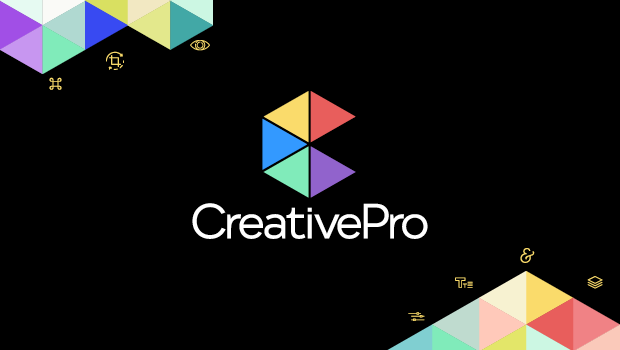For Position Only: Apple Walks the Tightrope

Apple Computer has always been caught between a rock and a hard place: The rock is the expectations of a dedicated core of professional users, who tend to be passionate about their Macs. The hard place is pressure from pundits, analysts, and shareholders to cut a swath in the broader Wintel market. After all, Wall Street is forever evaluating Apple’s fiscal performance and market share in the context of the PC clone market — as do computer users of every ilk, business analysts, and Apple itself, for heaven’s sake. Which means that every time Macworld Expo rolls into town (San Francisco this week; Tokyo, Paris, and New York at other times of the year), the spotlight turns to the Apple high-wire act, as the company strives not only to please its loyal professional user base but also to prove itself to the uninitiated public.
The Rock
I’m wondering if I can say anything in Apple’s defense without being written off as one of those “rabid users” whose judgement is obviously impaired by the simple fact that I use a Mac. And I admit, there are some pretty fanatical Mac users out there, some with the same sort of devotional energy as eccentric, tour-crazed Deadheads. (The reality is, some of us were day-job yuppies.) Why, you’d think Steve Jobs was Jerry Garcia, the way some of these Mac fans line up around the block to hear his keynote speeches, and then cheer as if on cue at every “one more thing” announcement: a titanium G4 PowerBook this time, with a new “inverted” Apple logo that appears right side up when opened.
But seriously, folks: Apple makes standout computers that have been tuned to the needs of color publishers from the get go. An intuitive and innovative graphical interface, multitasking, and 32-bit integrated color were just some of the technological breakthroughs that brought publishing to the desktop. The Mac’s innovative architecture is why Illustrator, QuarkXPress, and Photoshop came out first on this platform, bringing about (I know you know) the desktop publishing revolution. I’m hardly the first (or, no doubt, the last) to give Apple credit for transforming publishing from a high-end, proprietary process to a highly democratized, open-systems process.
As we head into the era of the “new digital lifestyle,” as Jobs called it in his keynote, nothing has changed. Apple continues to produce highly capable, breakthrough systems — the G4 Cube, for example, and the long-anticipated Mac OS X (coming to a store near you on March 24, really) — that offer print, multimedia, and online publishers new ways to be increasingly productive. And as long as Apple delivers such systems, we’ll buy them instead of a PC.
The Hard Place
Unfortunately, the support of creative and publishing professionals doesn’t pay Apple’s bills — or, rather, we don’t make Apple profitable enough to sustain the growth that analysts and the like want to see. It would be lovely if Apple could dutifully serve our professional needs and our professional needs only, but business just doesn’t work that way. The reality is that the company has to cut deeper into other markets — educational, corporate, and, especially consumer — if it’s to stay a viable computer manufacturer. (We could argue the intelligence or stupidity of the company’s failure to license its OS back in the 1990s, but that’s water under the bridge.) Apple is losing its edge on the educational front, and its share of the corporate market is a lost cause, which is undoubtedly why the company is so earnestly trying to make a name for itself in the consumer space.
We’ve all seen Jeff Goldblum musing on the miracle of iMovies and heard Elvis crooning “Blue Suede Shoes” while an indigo iMac twirls around our TV screen. At this week’s Macworld San Francisco, some of Jobs’ announcements were geared toward the same audience as these broadcast ads: the consumer. iTunes and iDVD put the Mac’s pretty (inter)face on MP3 and DVD recording, in the hopes that ease of use will make even your Great Aunt Alice want to partake of this “new digital lifestyle” (read: buy an iMac).
The Upshot
Of course, these i-nnouncements went hand in hand with an (albeit staged) Photoshop demo on one of the four new G4 Power Macs (a 733 MHz model) that showed the Mac, as usual, outperforming a “faster” PC competitor (a 1.5GHz Pentium 4). But also as usual, the Mac’s technical superiority is overshadowed by speculation as to whether this latest attempt to recruit consumers through i-software — and whether iCEO Jobs himself — can carry Apple through what will likely be some hard times ahead (the company plans to report its first quarterly loss in three years later this month).
If you ask me, the answer is an unequivocal “yes.” About half the company’s computer sales are iMacs, which shows that the company is convincing many consumers of what you and I already know — that Apple makes a great machine. I hardly expect Apple to convert PC users en masse, but I do believe the company will be successful enough to stay afloat well into the future, and that’s good news for creative professionals. If it’s because Lucy and Desi “Think Different” or because of translucent ruby chassis, so be it. The upshot is that your Great Aunt Alice will climb onboard, Apple with benefit from the increased sales, and creative professionals will get to keep buying and using a great computer — and one that has long helped us get our work done faster, smarter, and in our own way.
This article was last modified on January 8, 2023
This article was first published on January 11, 2001



